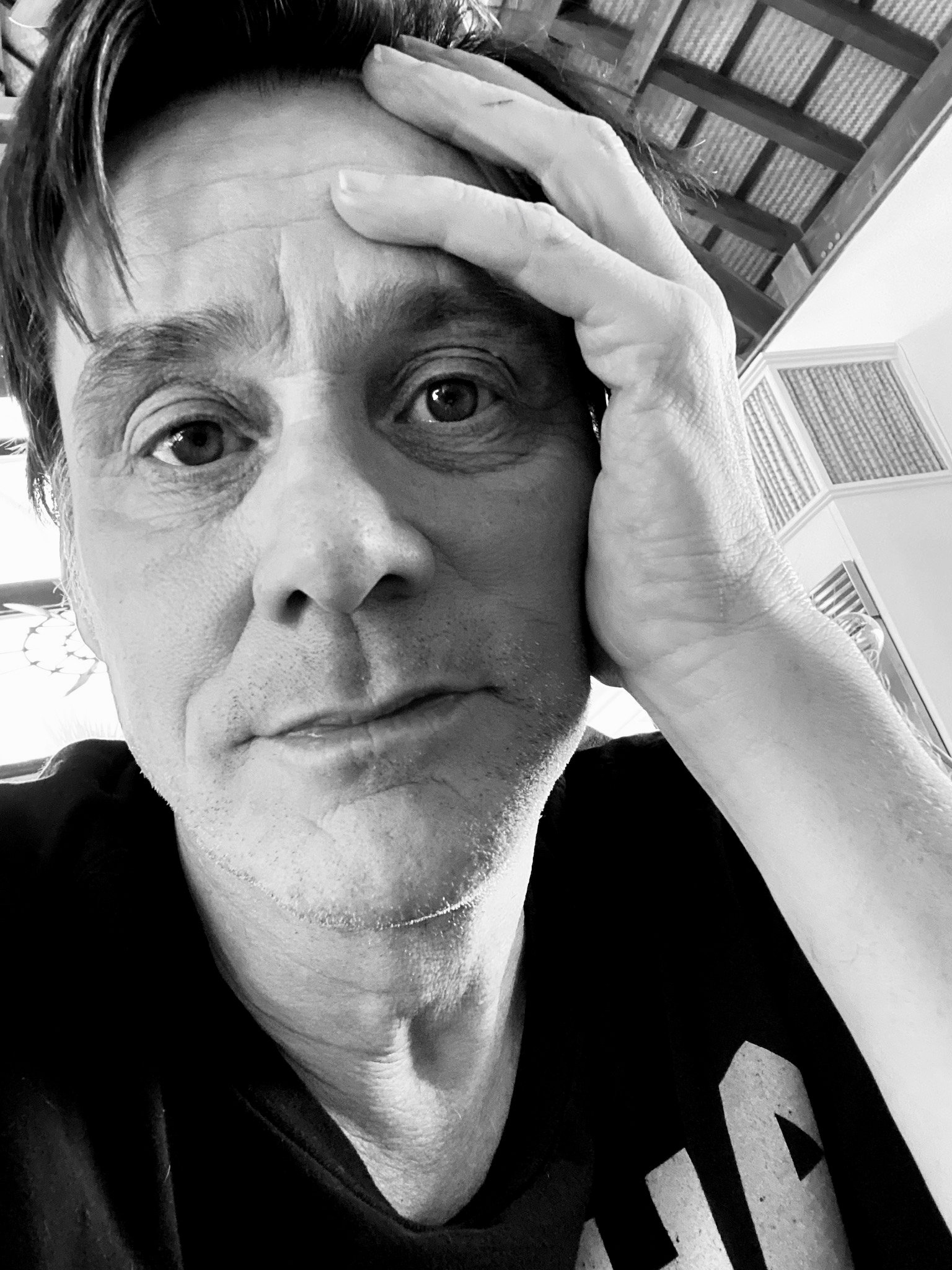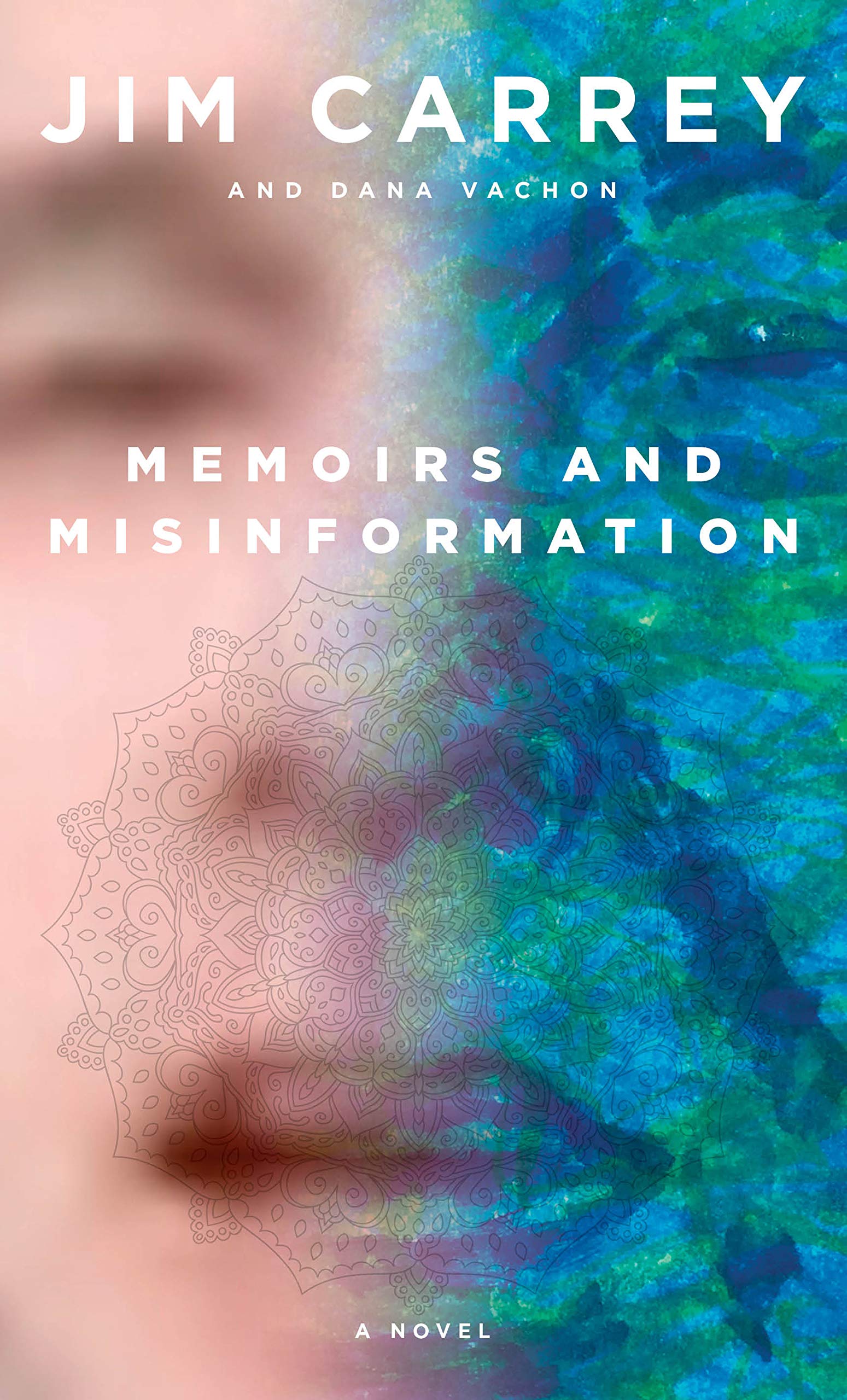NEWS
Jim Carrey New York Times Interview part 1
30 Jun 2020 By Eva Araújo (Web correspondent)
In a week, Jim Carrey’s biographic novel will hit the selves and we couldn’t be more excited! To promoted it they sit down via Zoom to talk to The New York Times about how the book came about.
Here’s the full interview by Dave Itzkoff:
Jim Carrey, Unmasked
“Jim Carrey is not doing well at all.
At the start of the novel “Memoirs and Misinformation,” we find Carrey, its protagonist, in the midst of an existential crisis, crushed by self-doubt and confined to his Los Angeles home, where he subsists on a diet of Netflix, YouTube and TMZ. His successes as an actor, in projects both comedic and dramatic, are distant objects in the rearview mirror, and now he is fixated on his own inevitable demise and the eventual end of the universe.
So begins a satirical adventure in which Carrey plumbs the chasms of Hollywood’s self-obsessed culture. While he searches for meaning in his life and career, this Carrey is also trying to choose among starring roles in a Mao Zedong biopic and studio movies based on children’s toys; contending with catastrophic wildfires, an all-female cadre of eco-terrorists and a U.F.O. invasion; and rubbing elbows with the likes of Nicolas Cage, Gwyneth Paltrow and Anthony Hopkins.”
As Carrey explained in an interview earlier this month, “It’s the end of the world, and we have the perfect book for it.”
“Not the end of civilization,” he continued. “Just the end of a world, the selfish world. We’re getting over the Ayn Rand, ‘you can be a jerk and we can all live in a paradise of jerks’ thing. That’s what we’re going through.”
How did the two of you first get connected?
JIM CARREY We met about nine, 10 years ago, when Twitter first became a big thing and people were still experimenting with it.
DANA VACHON It had been a really depressing winter. I was in Williamsburg, everything was closing and all the construction was arrested. And one morning I looked at Twitter and Jim had tweeted “BOING.”
CARREY I was just trying to create another version of the Force or chi. The energy that does everything positive in the world.
VACHON So in our first communication, I replied, “BOING that [expletive].” I’m something of a Hitchensian skeptic and he’s very mystical. But I looked at it and I thought, it would be great to make something really true with an artist of that caliber. But that’ll never happen. And a year later, we were working on it.

A Twitter exchange was all it took?
VACHON We had a manager in common who said, “Maybe you guys should talk,” and nothing came quite of that. After our first meeting, I was like, “He’s a lovely person — I’ll definitely never talk to him again.” But we kept talking.
CARREY This guy’s got an integrity that just doesn’t exist anymore. Immediately, we were friends, and the friendship got deeper as time went on.
Did you ever consider writing a factual memoir of Jim’s life?
CARREY There’s nothing, at this point in my artistic life, more boring than the idea of writing down the actual events of my life in some chronological order. Trying to expand my brand. This is not that. It’s a labor of love that we couldn’t stop. It started out as a little volley back and forth, here and there, and in the last few years it was eight hours, 12 hours most days, just grinding together in a room. But even when we butted heads, we always came up with something more interesting than we had initially conceived.
The protagonist of this novel is named Jim Carrey and he has lived a life very similar to yours. But who is he?
CARREY Jim Carrey in this book is really a representative — he’s an avatar of anybody in my position. Of the artist, of the celebrity, of the star. That world and all its excesses and gluttony and self-focus and vanity. Some of it is very actual. You just won’t know which is which. But even the fictional qualities of the book reveal a truth.
Dana, what was it like for you to get to know the real Jim, as opposed to the version of himself that he presents onscreen?
VACHON One of the first times he contacted me, he was watching the John Barrymore “Jekyll and Hyde,” which came to inform the story. He was telling me, “Watch Barrymore. Watch the economy of his face in this.” And I was like, oh, wow, Jim Carrey watches a lot of Netflix.
CARREY There were times when I was so afraid. I see a dead John Lennon on a gurney on YouTube. And I’m completely out of my mind because I realize that there will be selfies taken when my body falls. Somebody’s going to be looking at it as a novelty. That terror and mortal fear of wanting to make a good corpse drove me to the bathroom to make myself up before bed so that if I did die in the middle of the night, I would be presentable to an adoring public.
Together you’ve devised some strangely affecting scenes, like when the fictional Jim finds himself working alongside a digitally rendered rhinoceros containing the essence of Rodney Dangerfield.
VACHON Writing that was really intense. Jim’s like, “I don’t know what you thought we were doing, but we’re writing some Rodney Dangerfield bits for the next two or three days.” At the end of it, I’m pretty tired and Jim comes out with this turtle box and he opens the box.
CARREY [His widow] Joan Dangerfield, after Rodney passed, gave me this beautiful leather-bound box with Rodney’s favorite shirt and his pot pipe. If you knew Rodney, you’d know that’s pretty much the Holy Grail for Rodney. [Dangerfield voice] “It keeps me creative, man.”

Go to part 2.
-- Click to comment this article.
» Send to friend
« Newer article | Overview | Older article »









